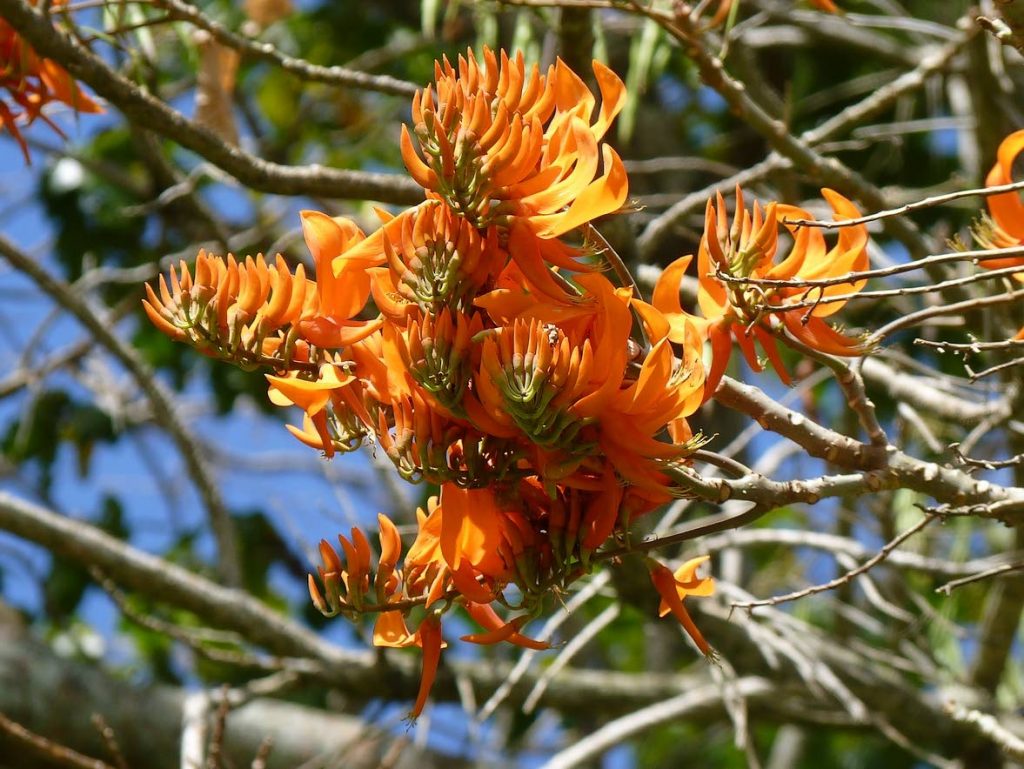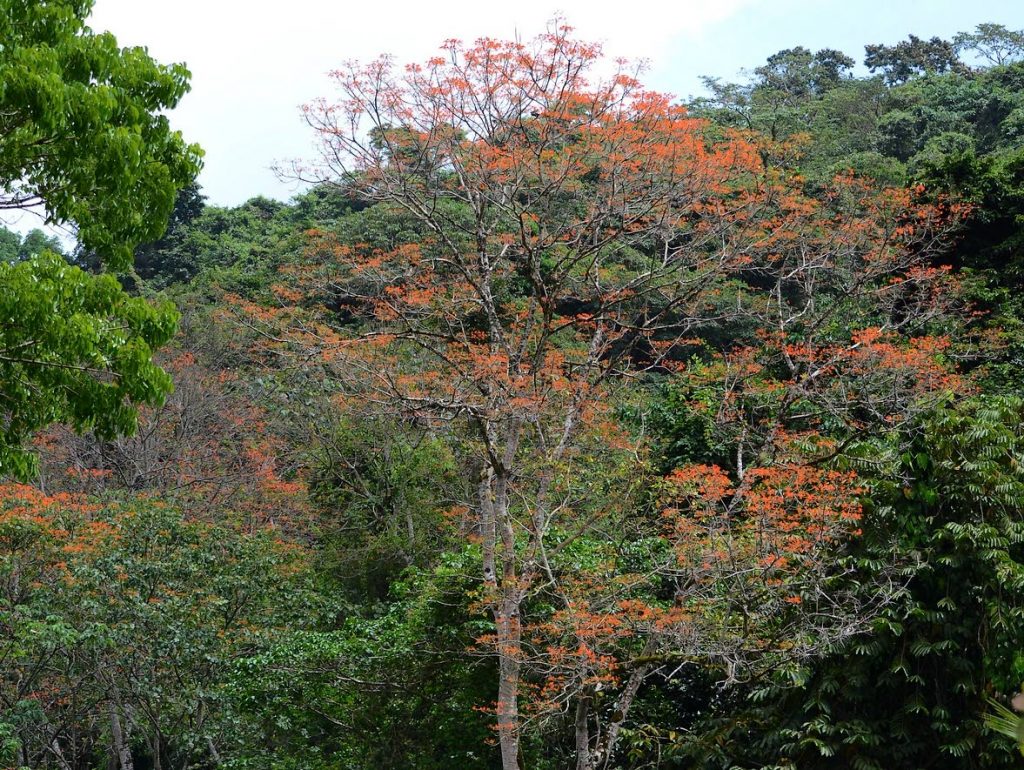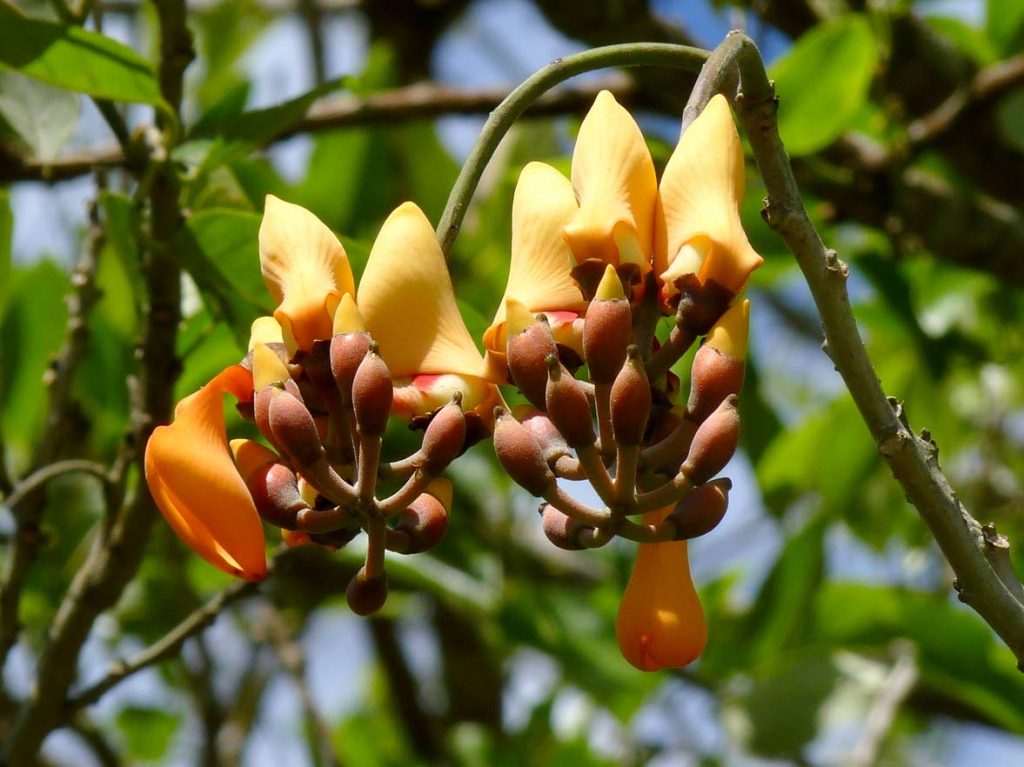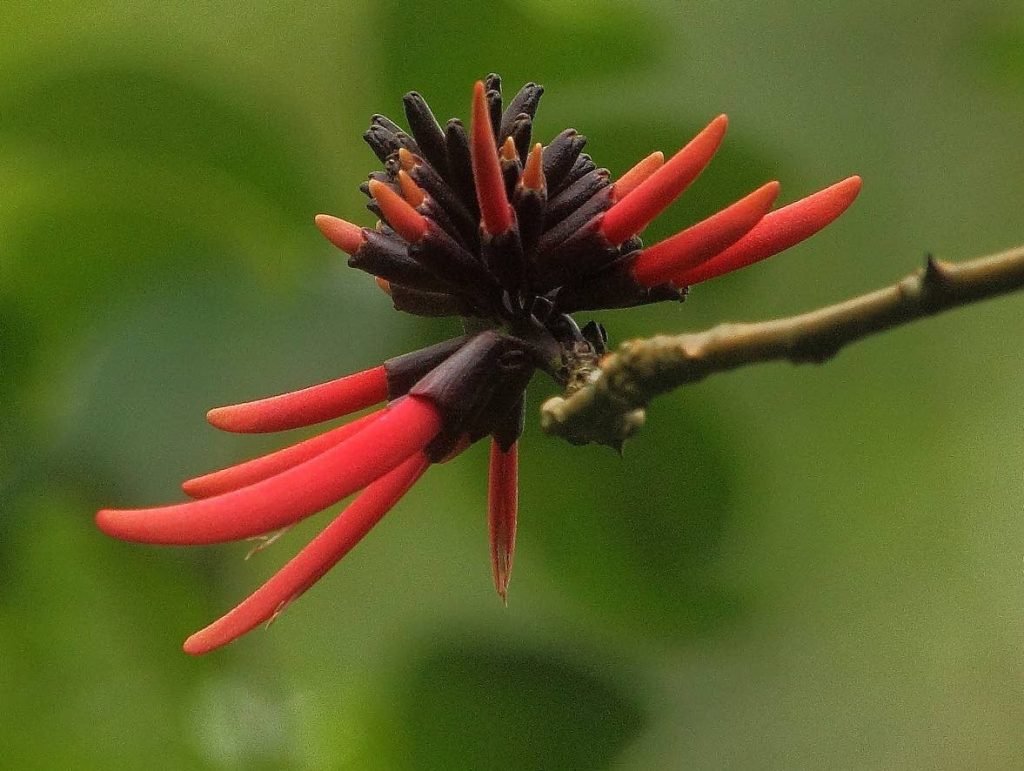The festival in our forests

Feroze Omardeen
Many citizens of our country might have been too busy with Carnival to notice, but there is another festival happening all around us as you read this. It is being conducted by the descendants of individuals brought to our islands to work in the fields and develop our country. Once a year, in an explosion of passion and colour, the immortelles bloom.
The mountain immortelle (erythrina poeppigiana) is native to inland Venezuela and was probably brought here in the nineteenth century to shade the cocoa plantations. Between 1870 and 1920, a great boom in cocoa production resulted in vast areas of our forests being felled, to make way for cocoa trees. Cocoa is naturally an understorey tree, and needs partial shade to flourish and bear well. Furthermore, the plantations tended to deplete the soil of nitrogen. Trees of the legume family, such as the immortelle, are able to use nitrogen from the atmosphere and "fix" it into a usable form as a natural fertiliser thanks to special bacteria found in its roots.

The mountain immortelle liked it here. It began to spread naturally and now grows widely on both islands. Like a true native, it became an integral part of our islands' ecology and culture. Epiphytes loved it, and some trees became extensively covered with bromeliads, orchids and other epiphytes, themselves productive and important components of our ecosystems.
As we enter the dry season, the brilliant orange of these trees in bloom can now be seen throughout our country, but what really makes the flowering of the immortelle a true national festival is the parade of life that accompanies the flowering season. The flowers are prolific nectar factories. In fact, the genus co-evolved with nectivorous birds, particularly hummingbirds in the New World. It is not uncommon to see ten to 20 hummingbirds from six or seven species on a single flowering immortelle. The spectacularly-coloured honeycreepers, tanagers and, of course, bananaquits, mix with them. Bees use the nectar as an important source for their honey.

But the flowers are actually edible, and oropendolas and green amazon parrots are often there feeding as well. Besides birds, monkeys are also known to eat them, and both leaves and flowers are eaten by insects. This tree has become a key player in a large man-made ecosystem of cocoa estates, now largely abandoned, that cover our islands.
And thank goodness for them. The presence of the under-storey cocoa and coffee, and the overhanging immortelles and other shade trees preserved a semblance of a forest structure, and help to preserve our soils and hillsides. Our islands are still green, despite the extensive clearing of primary forests for agriculture and other forms of land use.
But, did you know there were other immortelles here before the mountain immortelle arrived? We have two native species of erythrina. The “swamp” or “water immortelle” (erythrina fusca) grows naturally in our lowlands and also is used to shade cocoa. Its lighter coloured flowers are less spectacular, but beautiful nonetheless, and like all of the 130 Erythrina species worldwide, their flowers are well suited for pollination by birds. While the mountain immortelles seeds are apparently swallowed and regurgitated by birds, the seeds of the "water mortel" disperse in water by floating.

The "wild immortelle" or “jumbie bead” (erythrina pallida), is a widely occurring smaller tree, with a spectacular but small inflorescence that may be at eye level, suddenly coming into the view of a hiker or naturalist rambler. The first time I saw this flower was on Paria Beach, being visited by a hummingbird with a really long bill. In retrospect I now know that this bird was the long-billed starthroat. Only this species and two of our hermit hummingbirds seem to have long enough bills to reach the nectaries at the base of the tubular flowers. The bright red "jumbie bead" seeds of this tree are perhaps better known than the flowers, being traditionally used ornamentally in art and craft products.
Shouldn't we teach our children about these trees, with whom we share our beautiful islands? Perhaps they should know that there is not just one Carnival in our country.
Today’s feature was written by Feroze Omardeen. For more information on our natural environment, you can contact the Trinidad and Tobago Field Naturalists’ Club at admin@ttfnc.org or visit our website at www.ttfnc.org and our Facebook or YouTube pages.


Comments
"The festival in our forests"